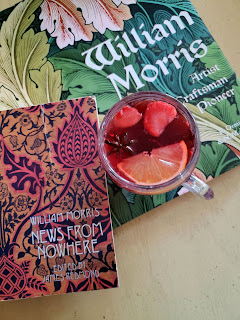1. STrAWBERRY BOURBON SMASH
INGREDIENTS
3 medium strawberries
1-2 tsp (4-8 g) sugar
6 fresh mint leaves, torn, plus more for garnish
1.5 oz (43 ml) Bourbon*
*Replace with pomegranate juice for a mocktail*
1/2 oz Grenadine
1 tbsp (15 ml) fresh lemon juice
1/4 tsp dark balsamic (or 2 dashes of Angostura bitters)
Ice
METHOD
In a rocks glass muddle the strawberries and sugar together, fill the glass with ice (or use whole frozen strawberries).
In a large cocktail shaker, add the torn mint leaves, bourbon, grenadine, lemon juice and balsamic. Fill the shaker with ice. Shake well and strain into the glass. Garnish with fresh mint sprigs. Enjoy!
***
2. STrAWBERRY Holiday Mulled Wine
INGREDIENTS
1 bottle of red wine*, recommended Cabernet Sauvignon or Merlot
*Replace with non alcoholic wine or fruit juice of choice for a non-alcoholic alternative*
2 cups of pure apple cider
1/4 cup of pure maple syrup OR honey
*Omit if using a sweetened juice for a non-alcoholic alternative*
3 whole cloves
Peel of 2 small oranges or 1 large one
Handful of orange slices (for garnish)
2 cinnamon sticks
1 star anise pod
1/4 cup of brandy
1 cup of sliced frozen strawberries
METHOD
Combine all ingredients into a stockpot set over medium heat, do not boil or the alcohol in the wine will evaporate completely.
Bring to a low simmer and heat for about 20 mins while stirring often. Lower the heat and allow it to cool slightly before loading it into mugs or heat-proof glasses.
Garnish it with a cinnamon stick, additional orange slices and some more frozen strawberries before serving.
***
3. sparkling STRAWBERRY THIEF
INGREDIENTS
1 bottle of Champagne**Replace with ginger ale or sparkling beverage of choice for a non-alcoholic alternative*
1 cup strawberries, fresh or frozen
2 Tbsp sugar
juice of 1 lime or 1/4 cup passionfruit juice
2-4 strawberries for garnish
METHOD
If you're using frozen strawberries, defrost them. Mash or macerate the strawberries with the sugar. Add the lime/passionfruit juice to the puree.
Place 1-2 tablespoons of the puree at the bottom of your glass and top with Champagne or sparkling beverage of choice. Garnish with strawberries, whole or sliced.
























